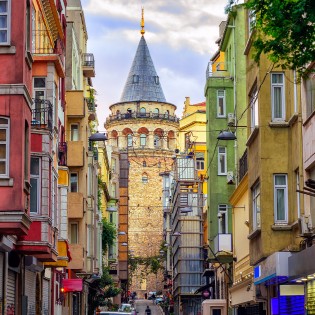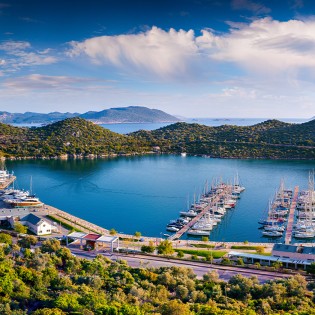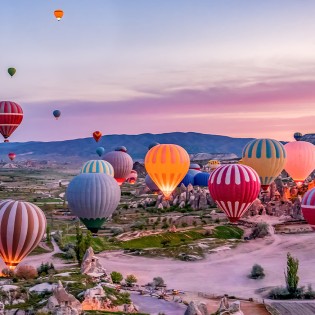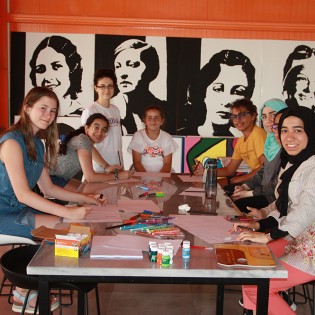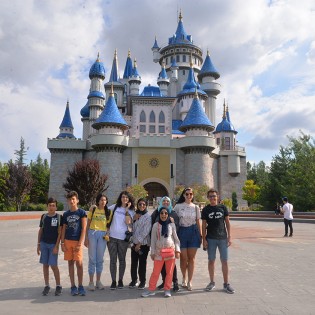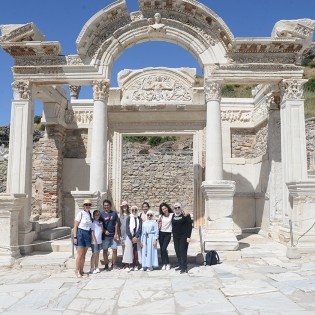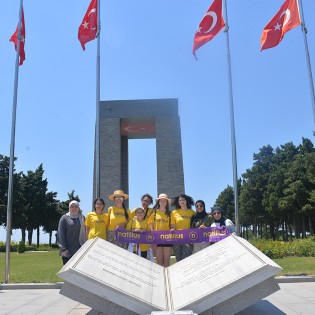
A symbol of civilizations: Hagia Sophia
The first Hagia Sophia was built in 360 AD with a basilica layout and architectural features. In 405, Hagia Sophia was rebuilt after it was burnt down during an uprising and was reopened in 415. The monument today is the third Hagia Sophia built on the same ground, according to records. Justinian (482-565), perhaps one of the greatest rulers of the Eastern Roman Empire, appeared on the stage of history here. Nearly 30,000 people lost their lives during an uprising in Istanbul in 532. As a result of this incident, the people suffered greatly. Justinian had to do something unprecedented in order to distract people from their thoughts, memories and to redirect their efforts.
Fastest-built church
Justinian assigned two prominent scientists of the period, Isidoros and Anthemios, to build Hagia Sophia. There were about 100 masters or architects under their command. Hagia Sophia gained the “fastest-built church” title within five years and 10 months. The emperor had to use ready materials for fast progress, so he had material brought to Istanbul from temples, marble and stone quarries from all across Anatolia. The material came from temples in Ephesus in İzmir, from Aspendos and from Baalbek in Lebanon. The works of numerous Anatolian civilizations were brought to Istanbul with these materials. This way, Justinian both unified the Eastern Roman Empire in Hagia Sophia and brought the elements of civilization to Hagia Sophia which had remained within the borders of the Eastern Roman Empire until that time. In summary, a new temple for humanity was built in Hagia Sophia. He had the greatest temple built, which has stood for centuries.
The weeping column
The Hagia Sophia may no longer be a place of worship, but one superstition – allegedly dating back to the days of Justinian I – lives on. Legend has it that if you stick your thumb in a small hole in a copper facing of the “weeping column” and your thumb emerges moist, you’ll be cured of all your ailments. Cynics point out that you’re more likely to get a wet thumb on busy days when plenty of sweaty digits have preceded you. Furthermore, Hagia Sophia’s greatest architectural legacy is its revolutionary dome – intended to be bigger, taller and more impressive than any other dome that had gone before it – although construction took something of a trial and error format, with one total collapse after an earthquake in 558. Now supported by 40 ribs, the dome is fittingly inscribed with the Light Verse from the Quran: “Allah is the light of the heavens and the Earth.” Besides these, circular marble slabs form the Omphalion – the site where Byzantine emperors were crowned. The Byzantines considered themselves the natural successors to ancient Rome after the division of the Roman Empire into eastern and western parts in the fourth century AD. In the event, the Byzantines in the east clung on for nearly a millennium longer than their western counterparts. Finally, the upper gallery houses Hagia Sophia’s most impressive mosaics, among them that of Empress Zoe, an 11th century Byzantine. First married aged 50, Zoe had three husbands, famously marrying her courtier the day that the first passed away (he was said to have been poisoned). The mosaic was tactfully altered with the arrival of each new husband.
Mosque of sultans
In the period it was built, Hagia Sophia was a protocol church in Eastern Rome, not a temple which people could visit and worship at. Hagia Sophia had never been a property of the patriarchate but was directly under the emperor. During the Ottoman rule, the Hagia Sophia was turned into a külliye, or social mosque complex, with the building of a religious college, a soup kitchen and even a primary school. One of the more noticeable additions to the Hagia Sophia during this period was the Sultan’s Loge – a raised kiosk built in the 18th century allowing Ottoman sultans to pray in the mosque without being seen. Hagia Sophia was a protocol church before the conquest, so it served as a protocol mosque. The imams and muezzins of Hagia Sophia and the mudarrises (professor), who worked in madrasahs built at the command of Mehmed the Conqueror, were always at the forefront in the Ottoman science hierarchy. In order to become a Hagia Sophia mudarris in the Ottoman Empire, one had to teach as a professor in numerous corners of the Ottoman lands. The ultimate position reached was teaching in Hagia Sophia. For this reason, it was Hagia Sophia Cami-i Kebir in the Ottoman Empire which means the Great Hagia Sophia Mosque, and it is different from other mosques in this respect. Topkapı Palace could have been built anywhere, however it was built in immediate vicinity of Hagia Sophia, which caused Hagia Sophia to serve as a protocol mosque.

